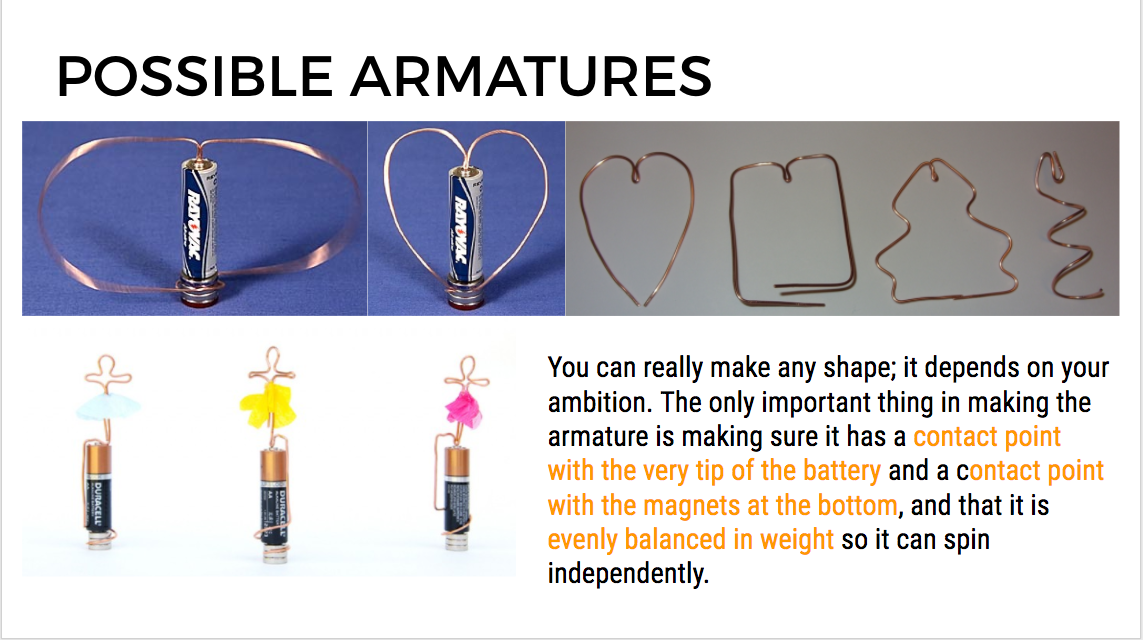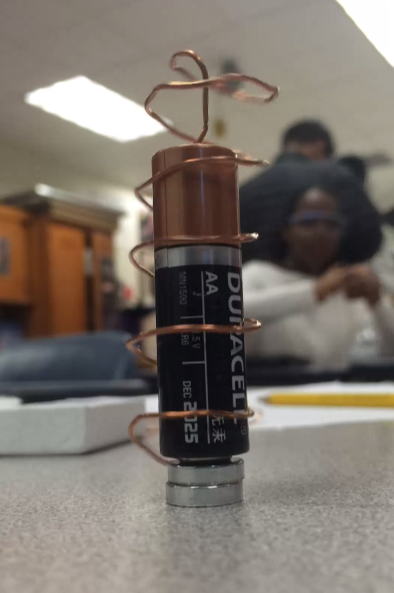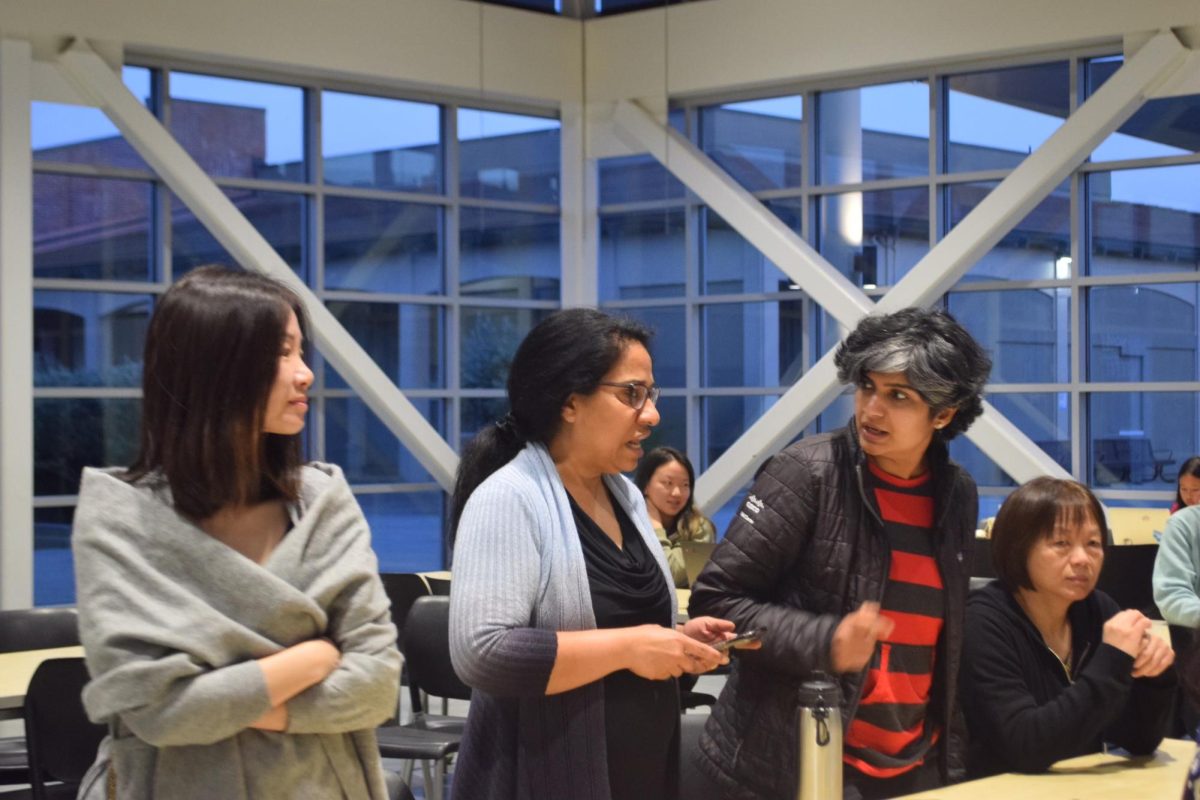When the copper wire began to spin all on its own, the room was awed. On Oct. 24, Science National Honors Society held their second lab this year in B101. This month, the club was exploring the different concepts of physics, starting with electromagnetism, the interaction of electric and magnetic currents.
In the meeting, SNHS taught members how to make their own homopolar motor. A homopolar motor is an electric motor that uses the currents to power rotational movement. It requires only three things: a battery, a small magnet disc and some copper wire.

The copper wire connects the positive battery terminal to the negative terminal when it is connected to the magnet, closing the electric circuit. When the current flows in a magnetic field, it creates a force called Lorentz Force which causes the wire to spin. As activities coordinator junior Grace Luo demonstrated during the lab, the easiest way to make a homopolar motor is to first loop a copper wire multiple times around your finger.
Then, after you have your copper coil, set it to the side and put your magnet disc on the negative end of the battery. Gently fit your copper coil over the battery and place the end on the magnetic disc. If it’s successful, the copper wire should be able to spin around the battery like so:
“We chose the homopolar magnets lab because you didn’t need that many supplies; it was a really simple lab but with a really profound impact and message,” Luo said. “You could actually see your work being made — it was something physical created with your hands. It makes the effect of learning about electromagnetism and the Lorentz effect more powerful.”
According to Luo, you can get creative with the designs. While the copper loop is the easiest to achieve, Luo showed other designs such as hearts, Christmas Trees and big rectangles.

Junior Bhakti Patwardhan knew nothing about electromagnetism at first, so this lab introduced a new concept for her.
“I didn’t know electromagnetism could be used to physically move objects, so that’s something that has enhanced my knowledge of science,” Patwardhan said.
The hands on experience helped junior Issra Osman understand how how magnets relate to motion.
“The fact you can make your own design and watch it spin, trying out different patterns and shape, and once it finally works it is really cool,” Osman said.
Junior Issra Osman’s finished product.








